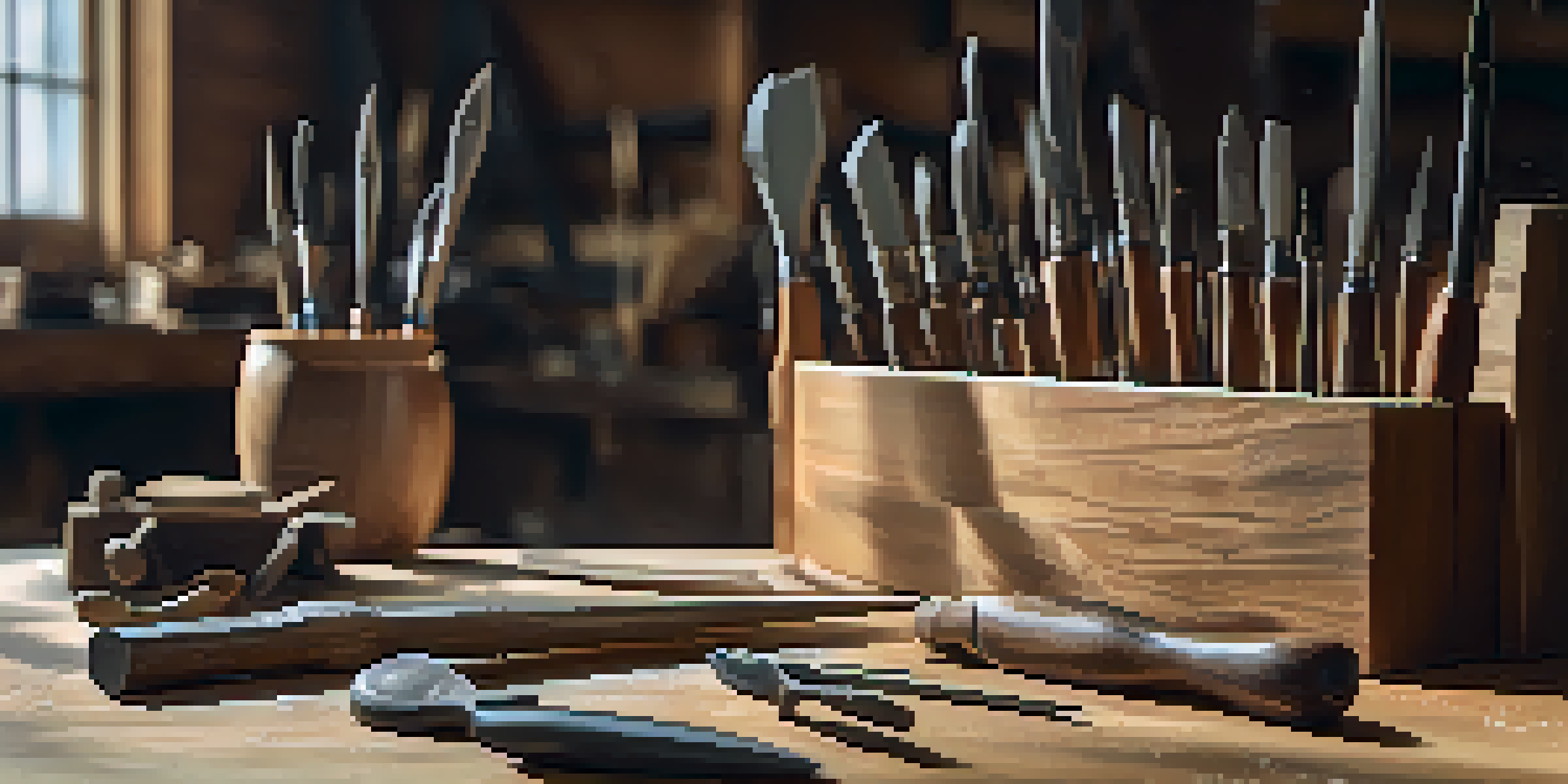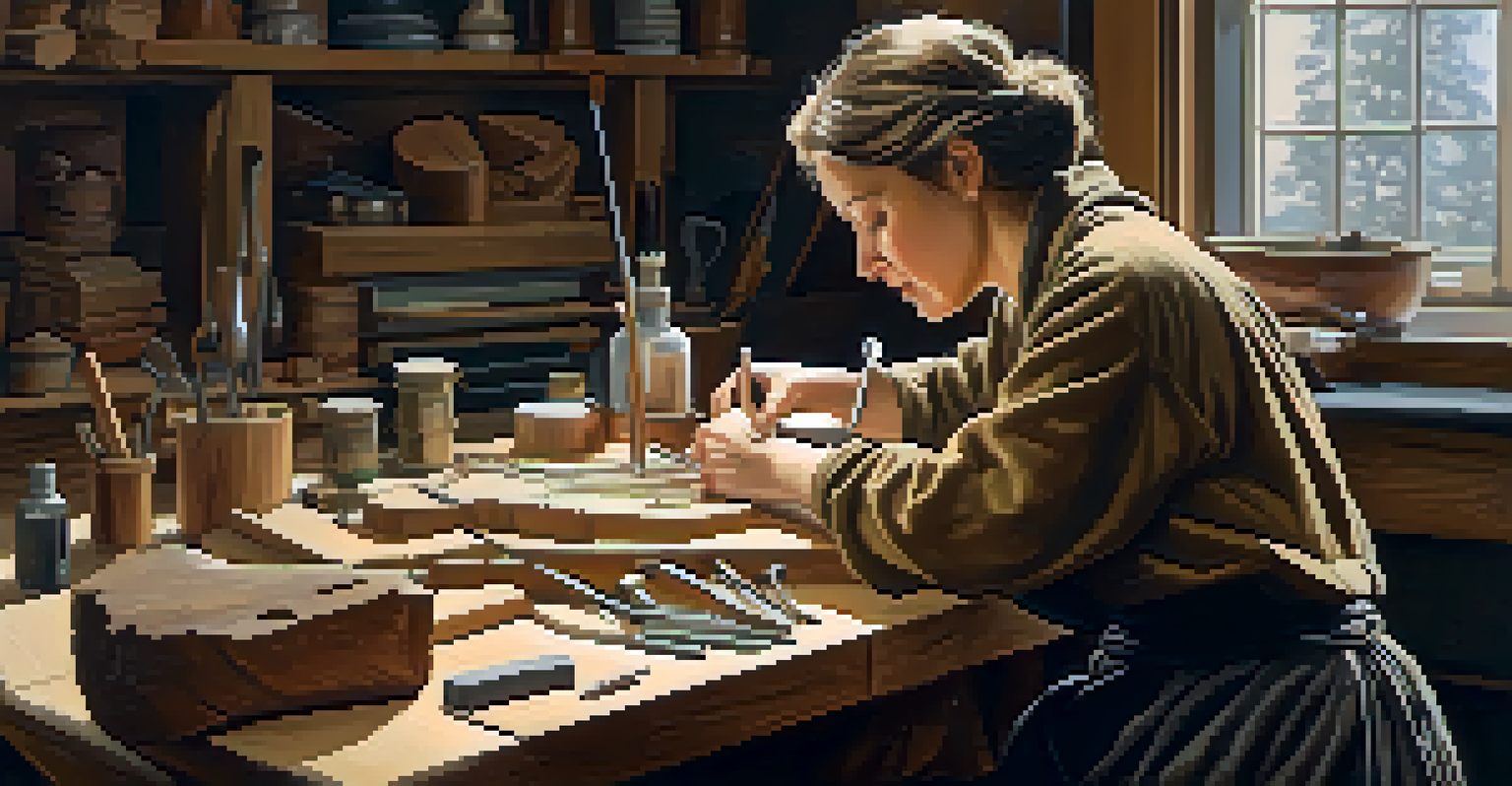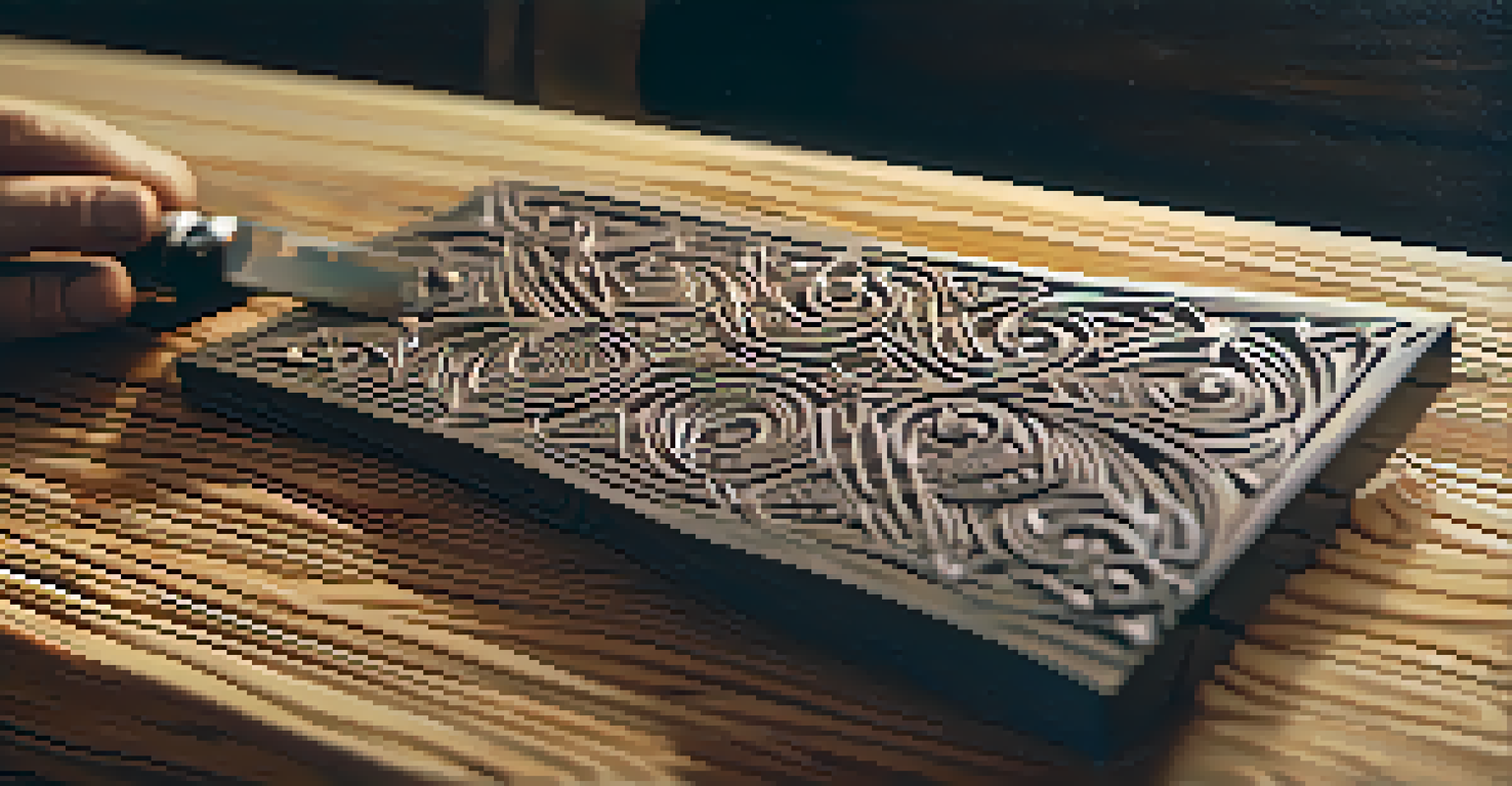Understanding Carving Tools: Safety Features and Use

Introduction to Carving Tools and Their Importance
Carving tools are essential for artists and craftsmen alike, allowing for precision and creativity in wood, stone, and other materials. Understanding these tools not only enhances your craft but also ensures your safety while using them. Whether you're a beginner or an experienced carver, knowing the basics of your tools is vital.
Safety isn't just a precaution; it's a fundamental part of the carving experience that can enhance your creativity.
Each carving tool serves a specific purpose, from chisels to gouges, and their effectiveness is heavily influenced by how well they are maintained and used. This article will guide you through the safety features of these tools and how to maximize their use. Let's dive deeper into the world of carving tools and the essential safety measures one should always consider.
By the end of this article, you'll not only understand the types of carving tools available but also how to use them safely and effectively. Safety isn't just a precaution; it's a fundamental part of the carving experience that can enhance your creativity.
Types of Carving Tools: A Brief Overview
Carving tools come in various shapes and sizes, each designed for specific tasks. Common types include chisels, knives, and gouges, each offering unique capabilities for different materials. For instance, a chisel is great for removing large sections of wood, while a detail knife excels in intricate designs.

Understanding the specific use of each tool can significantly improve your carving projects. For example, using a skew chisel can help create clean, angled cuts, while a spoon gouge can help hollow out shapes effectively. Knowing these distinctions helps you select the right tool for the job, which is crucial for both quality and safety.
Understanding Carving Tools Matters
Knowledge of different carving tools and their specific uses enhances both safety and creativity in your projects.
As we explore the safety features of these tools, it's important to remember that the right tool, combined with proper technique, can prevent many accidents. Choosing the right tool is not just about the task at hand but also about ensuring that you are equipped to work safely.
Essential Safety Features in Carving Tools
Safety features in carving tools can significantly reduce the risk of injury. Many modern carving tools come with ergonomic designs that provide better grip and control, minimizing the chances of slips. A well-designed handle can make all the difference when you're working on a detailed project.
The best safety device is a careful worker.
Additionally, many tools have safety guards or sheaths that protect the blade when not in use. This is especially important for sharp tools like knives and chisels, as even a moment of carelessness can lead to serious injuries. Always check for these features before purchasing your tools to ensure maximum safety.
Remember, even the safest tools require responsible handling. Familiarizing yourself with these features can help you make informed decisions about tool selection and usage, leading to a safer and more enjoyable carving experience.
Proper Handling Techniques for Carving Tools
Proper handling techniques are crucial for ensuring your safety while using carving tools. Always hold your tools with a firm grip and position your hands in a way that minimizes the risk of cuts. For instance, keeping your fingers behind the cutting edge is a simple yet effective way to avoid accidents.
It's also important to use your tools in a well-lit and clutter-free workspace. A bright environment allows for better visibility, helping you maintain focus on your project. Additionally, a clean area reduces the chances of tripping or accidentally bumping into objects while carving.
Safety Features Are Crucial
Incorporating safety features in carving tools, such as ergonomic designs and safety guards, significantly reduces the risk of injury.
Lastly, consider wearing protective gear, such as gloves and safety glasses. While it may not be comfortable for everyone, this extra layer of protection can safeguard against unexpected slips or flying debris. Taking these precautions can provide peace of mind as you immerse yourself in your creative process.
Regular Maintenance: Keeping Your Tools Safe and Effective
Regular maintenance is key to ensuring your carving tools remain safe and effective. Dull tools can lead to increased pressure during carving, which raises the risk of slips and accidents. Keeping your tools sharp not only makes your work easier but also safer.
Cleaning your tools after each use is another important aspect of maintenance. Residue from the materials you carve can cause rust or deterioration if left untreated. A simple wipe down with a cloth and occasional oiling can help prolong the life of your tools and maintain their performance.
Additionally, always store your tools properly after use. Using a designated toolbox or a wall-mounted storage system keeps your workspace organized and reduces the risk of accidental cuts when reaching for a tool. Investing time in maintenance pays off in the long run, keeping both you and your tools in great shape.
Recognizing and Preventing Common Carving Accidents
Understanding common carving accidents can help you take preventive measures. One of the most frequent issues is cuts from slipping tools, often caused by improper grip or using dull blades. Recognizing the signs of wear on your tools is essential for preventing these types of accidents.
Another common accident is hand fatigue, which can lead to loss of control. Take breaks during long sessions to rest your hands and maintain focus on your work. Stretching and relaxing your hands can also improve your grip and promote better handling of your tools.
Regular Maintenance Prevents Accidents
Consistent maintenance of carving tools, including keeping them sharp and properly stored, is essential for safe and effective use.
Lastly, always be aware of your surroundings while carving. Distractions can lead to mistakes, so it's crucial to stay focused on the task at hand. By being proactive and recognizing potential hazards, you can create a safer carving environment for yourself.
Conclusion: Embracing Safety in Your Carving Journey
Embracing safety in your carving journey is essential for both your well-being and the quality of your work. By understanding your tools, employing proper techniques, and maintaining them regularly, you can minimize risks and enhance your creative experience. Remember, safety and artistry go hand in hand.
As you dive into your next carving project, keep these safety features and tips in mind. They not only protect you but also help you enjoy the process more fully, allowing your creativity to flourish without the weight of worry. A safe workspace fosters confidence in your skills and encourages exploration.

In the world of carving, every cut counts, and so does every precaution. So, gear up, stay safe, and let your creativity shine through—because with the right knowledge and approach, you can carve your way to success!